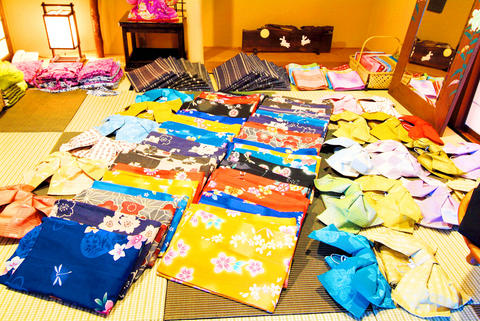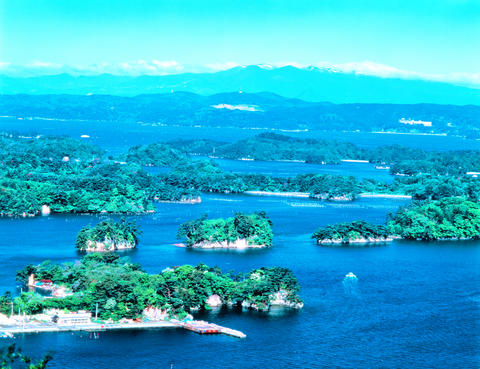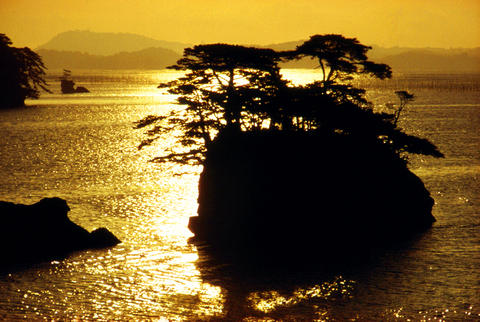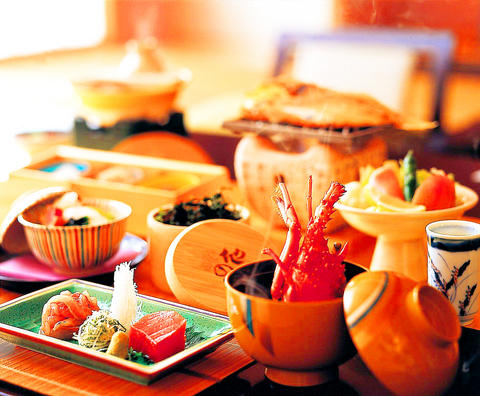Since 1853, when US naval officer Matthew Perry arrived in Edo Bay with his squadron of "black ships" looking for a trade deal, Japan has possessed a mystique for Westerners that has served as much to alienate as attract. The idea of a closed society, an isolated country that agreed to open up to trade only when threatened with naval bombardment, still haunts the foreign imagination.
Despite the enthusiastic assimilation by contemporary Japanese of every international cultural tic, from dreadlocks to David Beckham, many gaijin, foreigners, still suspect there's something about the exchange that isn't reciprocal, that aspects of this wealthy modern democracy are being held back or kept secret. This image of impenetrable Japan informs such films as Lost in Translation, in which two Americans work through their culture shock in the luxurious surroundings of the Tokyo Park Hyatt Hotel.
It certainly looks as though Japan's reputation as a country of obscure codes and rarefied manners affects patterns of tourism. Spend a day on the JR Yamanote train line, which runs a circuit around central Tokyo, and you see foreigners everywhere - standing at intersections in Shibuya or Shinjuku, gawping up at J-Pop stars shimmering on giant screens. They're browsing in electronics shops in Akihabara, taking pictures of the cos-play freaks - kids who dress up as their favorite manga characters. But if you board one of the comfortable shinkansen, or express trains, and head out of the city, they vanish. In almost two weeks traveling through Tohoku, the mountainous northeastern region of Honshu, the largest of Japan's major islands, I'll count nine foreign tourists, four of whom are together.

Tohoku is the deep north, through which the famous Zen monk and haiku poet Matsuo Basho walked in 1689, writing one of the most famous travelogues in world literature, Oku no Hosomichi, or the Narrow Road to the Interior. In the 17th century this was a wild and dangerous region, roamed by bandits. Today, most of Japan's 120 million people still live on the flat coastal plains, while the heavily forested mountains of Tohoku are a place to get away from it all, to experience nature and relax at one of the region's numerous onsen, or hot spring resorts. There is a highly developed tourist culture ?it's just that it's almost 100 percent Japanese.
Like Basho 300 years ago, I stop off on the way to the mountains at Matsushima, a seaside town fronting a bay scattered with hundreds of pine-covered islets. For centuries, Matsushima has been appreciated as one of the nihon sankei, the three scenic places considered the most beautiful in all Japan. "Islands are piled above islands," Basho wrote, "and islands are joined to islands, so that they look exactly like parents caressing their children or walking with them arm in arm. The pines are of the freshest green and their branches are curved in exquisite lines, bent by the wind constantly blowing through them."
Rendered speechless

Photos: JNTO and Japan Ryokan Association
An apocryphal story has it that when asked to compose a poem extolling all this beauty, the poet was initially lost for words. His response, in perfect haiku form (a line of five syllables, a line of seven and a second line of five) is, I suppose, a sort of Zen gag:
Ah, Matsushima!
Ah-ah Matsushima! Ah!

Matsushima! Ah!
The pine islets, with their crumbling Buddhist shrines and wind-shaped trees are still beautiful, but in many ways Matsushima has been damaged by tourism. Coach loads of visitors swarm along a waterfront lined by cheap restaurants and souvenir shops. The noise of pleasure boat engines floats across the water, accompanied by the amplified commentary of the guides.
But Matsushima does offer me one moment of giddying beauty - at the Zuiganji temple, where I walk through a meticulously gardened stand of red pines rising out of a perfect carpet of moss, past a cliff whose natural caves and niches are filled with stone Buddhas and Bodhisattvas. On the train platform the next morning stand six young Zen monks, dressed in short robes and straw sandals and with big conical hats in their hands: descendants of Basho, wandering the earth, or at least the suburban train line to Sendai, the big city half an hour down the coast. I head north to Hirosaki, the city of apples. If apples are your thing, you should probably get on a plane right now. At the Hirosaki city Apple Park you can see hundreds of trees, 60 different varieties, before sampling apple curry in the cafe and taking your pick from a selection of over 700 apple-related souvenirs. According to that infallible source, the Internet, the heaviest apple in recorded history weighed 1.849kg and was grown and picked by Chisato Iwasaki at his apple farm in Hirosaki on Oct. 24, 2005. I am entirely unsurprised by this information. Hirosaki apples are huge, sweet, red things, the size of melons, like galas on steroids.

I take a pleasant ride around the town on one of the free bikes provided by the tourist office, taking in the park, the castle, and a district of old samurai houses where I glimpse beautiful topiary gardens behind high wooden walls. Realizing I'm actually wrestling with the temptation to buy a stuffed apple mascot, a sort of elf in a little green hat, I decide it's time to move on. The railway doesn't run into the mountains, so I acquire a little silver Mazda. Driving in rural Japan is, at least in mechanical terms, very easy: the roads are great, the Japanese drive on the left, and on highways the speed limit is 50km an hour - perfect when you're lost or enjoying a soporific scenic cruise, but frustrating when you're taking a 100km detour because a landslide has blocked the road, as happened to me one day.
The trickiest part is finding your way. Major locations are signposted in roman characters. Others, such as secluded inns and hot pools, are not. Each morning I start my day by bowing to whoever is standing behind the reception desk at my inn and handing over a piece of paper, on which is written "please program my GPS to take me to ... ." Where my GPS takes me is a mystical region of mountain roads winding through dense forest. I find it less threatening than Basho evidently did: "The mountains were so thickly covered with foliage and the air beneath so hushed that I felt as if I were groping my way in the dead of night. There was not even the cry of a bird to be heard, and the wind seemed to exhale black soot through every rift in the hanging clouds."
In the midst of this somber greenery is Aoni Onsen, a ryokan, traditional inn, by a river, where travelers can stay and bathe in hot pools lit at night by flickering oil lamps. Set up in the 1930s by a poet who wanted somewhere to recuperate from illness, it's a tranquil place. There are no televisions or radios in the rooms. Electricity is hardly used, though the bright glimmer of a cash register and a computer behind the reception desk breaks the spell.

I change out of my clothes into a cotton yukata, summer kimono, and geta, traditional wooden sandals, which, like almost all house shoes in Japanese hotels, are several sizes too small. They force me to walk in an alarming seesawing clomp. After a couple of trips to bathe, tradition gives way to convenience and I swap the geta for the rubber pool shoes everyone else has chosen. The ritual of communal bathing (like any situation in which you get naked with strangers) is one of those areas where a basic knowledge of etiquette comes in handy.
Taking a dip
British bathing habits are perplexing to the Japanese, who wouldn't dream of soaping themselves in a tub full of dirty water and dead skin. All the actual washing is done outside. You squat and sluice yourself with water from a shower-head or a wooden bucket, then vigorously and thoroughly clean every part, rubbing yourself down with a little washcloth. Only then are you ready to get into the water. Once you're in, it's polite not to immerse your head, or your cloth. Many people fold them up and put them on top of their heads. A foreigner in a rural onsen is, to say the least, a curiosity, and people watch me, albeit discreetly. Soon enough my novelty value wears off, and I join in the soothing ritual of bathing, scrubbing, soaking, steaming and cooling down in a tepid outdoor pool.
As dusk falls and the lanterns are lit, I sit and watch water tumbling down a 20m cliff. Then, crossing the little wooden bridge, which spans the river, every pore clear, every muscle relaxed, I go to dinner, which is eaten communally in Aoni's main hall. Perhaps 50 guests sit at long low tables to a meal of seasonal food, matsutake mushrooms, grilled fish and rich autumnal miso soup formally presented on lacquer trays. By nine the place is silent. Everyone is in bed.
Onsen come in all shapes and sizes. In little Tohoku hill-towns, they're much like old-fashioned public bathhouses, filled with men shaving and chatting and reading manga, half-reduced to pulp by the steam.
High in the mountains I visit Sukayu, a ski lodge famous for its "thousand-person bath," a huge sulfur-fed tub of milky water. Patrons sit beneath bamboo pipes, taking "cascade baths," some wearing plastic caps to protect their hair. The big hall, its pine walls and fittings blackened by years of exposure to sulfurous steam, is one of the strangest environments of my trip. In some places the bathing is only a secondary attraction. At Tamagawa, there's a sort of geothermal wonderland, with bubbling pools of mud and vents belching out acrid steam.
In most places the public would be separated from these dangers by barriers. Here it's traditional to lie on the hot soil, as a cure for various arthritic and rheumatic ailments. People swathe themselves head to foot in blankets, dotting the smoke-shrouded valley like highly colored caterpillars. The effect is rather like visiting a refugee camp on Mars. One man is cooking yam and pumpkin by lowering a bag into a steam vent. The atmosphere gives me a headache, and my clothes stink of sulfur for hours afterwards.
Ryokan, with their traditional straw tatami mats and futon beds, unrolled while you're eating dinner, can be atmospheric places like Aoni or like motels with different furniture, but even these are interesting to a foreigner: In one I join a throng of guests grazing at the dinner buffet, all wearing the hotel-issue mauve yukata and grass green leatherette sandals. It's an odd sight, like walking into a Marriott somewhere in the Midwestern US and finding the restaurant full of people sitting in their fluffy white bathrobes.
One night I stay at Tsurunoyu, an onsen that rivals Aoni in its charm. Part of a resort area called Nyuto, Tsurunoyu was once the private spa of the Lords of Akita. It was opened in 1701, and is reputedly named for a wounded crane found bathing in one of the pools by a hunter. Meals are eaten in traditional mountain fashion, around square charcoal hearths called irori, on which you can barbecue fish and vegetables, before tucking into a bubbling wild yam nabe cooked in a metal pot hung from a hook over the coals.
The food is exquisite - I eat venison sashimi, grilled fish, scallops with miso, delicate salads of mushrooms and green bean shoots, and mountain vegetables, the fragrant wild ferns, brackens and tubers that form an integral part of rural Japanese cooking. At Tsurunoyu, the traveler Basho seems close at hand:
Guest's shadow through
The paper screen - I sit dreaming
Over charcoal fumes.
A day or two later I have a less elevated (but shamefully tasty) culinary experience on the boardwalk at Lake Towada, eating a German-style sausage on a curved "stick" which turns out to be the rib bone of, I think, a pig. As I indulge my creeping suspicion of cannibalism, I become aware of the sepulchral stillness of the place, with its dazzling light and empty souvenir shops and lines of disused pedalos shaped like swans and sea monsters. Were this lake in, say, Canada or New Zealand, there would be windsurfers and yachts and swimmers and people on jet skis.
Here it's silent and slightly forlorn. Later I work out where everyone is. Though they're not much interested in the sporting possibilities of Towada, Japanese tourists are captivated by the nearby Oirase river gorge, a paradise of waterfalls and streams, which has to be one of the most picturesque river valleys I've ever walked down, despite the coach parties trailing after their spiffily dressed guides.
Traditional beauty
From Towada, I drive to Kakunodate, the end of my mountain journey, the kind of small town where Basho would rest from his travels and earn money by leading renga, communal poetry writing sessions. Kakunodate is little altered from its 19th-century heyday, with a samurai district of elegant houses, and a quiet merchants' district, where the shopkeepers use abacuses to tot up your purchases. Tourists wander the streets, tasting sake and red bean sweets, buying cherry-bark handicrafts and blue glazed pottery.
I stay in a ryokan called the Tamachi Bukeyashiki, which serves exquisite Italian-Japanese fusion food. Were this restaurant in London, people would be selling their grandmothers for a table. The six courses, including marbled beef, pumpkin soup topped with pond weed and clams in a delicate clear broth, are all delicious. I eat there twice, and the first dinner is the best meal I've eaten all year.
Yet in the end, it's a noodle seller who provides the most sincere example of openness. He's a big, bearded man running a newly opened place near the ryokan, with pine tables, modern calligraphic scrolls and a baby grand piano. He appears to like simplicity: the shop sells udon noodles. Nothing else, just udon noodles. It's the shortest menu imaginable. You can have them cold or hot, in a square lacquer box, accompanied by vegetable broth with the option of a few slices of duck. Oh, and Schubert. As he works, making the single dish to which he's devoted himself, the noodle-maker is always accompanied by the chamber music of his favorite composer. The udon, needless to say, are perfect. I pay and pick up my umbrella. Outside there is a storm.
First winter rain -
I plod on,
Traveler, my name.
- Basho

On April 26, The Lancet published a letter from two doctors at Taichung-based China Medical University Hospital (CMUH) warning that “Taiwan’s Health Care System is on the Brink of Collapse.” The authors said that “Years of policy inaction and mismanagement of resources have led to the National Health Insurance system operating under unsustainable conditions.” The pushback was immediate. Errors in the paper were quickly identified and publicized, to discredit the authors (the hospital apologized). CNA reported that CMUH said the letter described Taiwan in 2021 as having 62 nurses per 10,000 people, when the correct number was 78 nurses per 10,000

As Donald Trump’s executive order in March led to the shuttering of Voice of America (VOA) — the global broadcaster whose roots date back to the fight against Nazi propaganda — he quickly attracted support from figures not used to aligning themselves with any US administration. Trump had ordered the US Agency for Global Media, the federal agency that funds VOA and other groups promoting independent journalism overseas, to be “eliminated to the maximum extent consistent with applicable law.” The decision suddenly halted programming in 49 languages to more than 425 million people. In Moscow, Margarita Simonyan, the hardline editor-in-chief of the

Six weeks before I embarked on a research mission in Kyoto, I was sitting alone at a bar counter in Melbourne. Next to me, a woman was bragging loudly to a friend: She, too, was heading to Kyoto, I quickly discerned. Except her trip was in four months. And she’d just pulled an all-nighter booking restaurant reservations. As I snooped on the conversation, I broke out in a sweat, panicking because I’d yet to secure a single table. Then I remembered: Eating well in Japan is absolutely not something to lose sleep over. It’s true that the best-known institutions book up faster

Though the total area of Penghu isn’t that large, exploring all of it — including its numerous outlying islands — could easily take a couple of weeks. The most remote township accessible by road from Magong City (馬公市) is Siyu (西嶼鄉), and this place alone deserves at least two days to fully appreciate. Whether it’s beaches, architecture, museums, snacks, sunrises or sunsets that attract you, Siyu has something for everyone. Though only 5km from Magong by sea, no ferry service currently exists and it must be reached by a long circuitous route around the main island of Penghu, with the